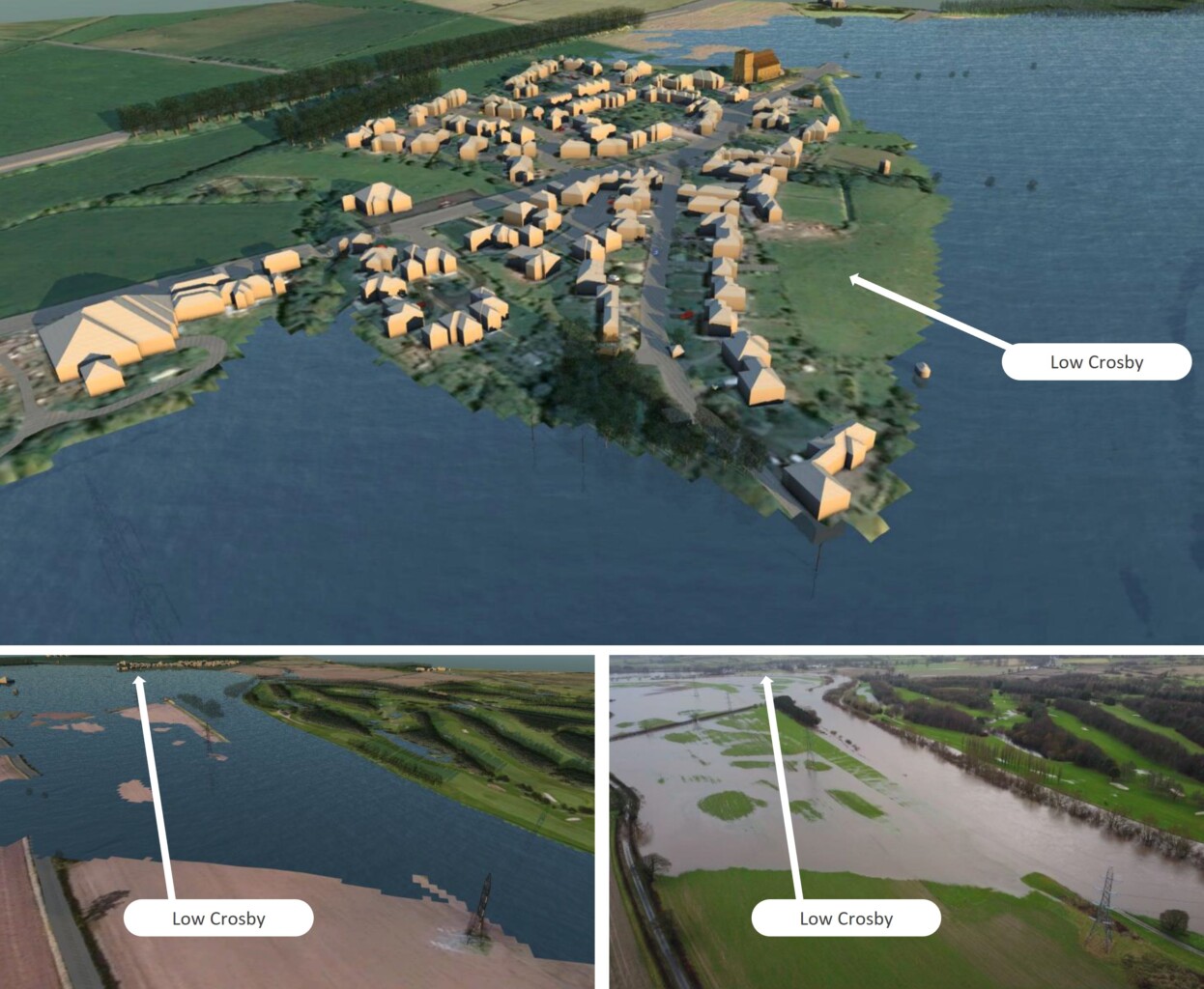Low Crosby is on the right bank of the River Eden, 5km north-east of Carlisle in Cumbria. It has suffered from repeated flooding; most notably following Storm Desmond in December 2015 when 60 properties were affected.
The Environment Agency wished to deliver a scheme to reduce flood risk to the community in a cost-effective and sustainable way. The objectives, set in the context of the UN Sustainable Development Goals, were to deliver key flood risk management outcomes, protect and enhance the environment, promote health and wellbeing, and implement a sustainable low carbon solution.
We reprofiled a 3.2km private embankment on the left bank of the river. In doing so, 185ha of floodplain was reconnected to locally increase the conveyance capacity and significantly reduce flood levels within Low Crosby village. Reprofiling the existing embankment meant that the natural hydraulic capacity of the floodplain could be maximised without the need to construct new assets. No concrete or steel was used, and the client has no ongoing maintenance liability: reducing costs, carbon emissions and eliminating associated health and safety hazards.
Three Winning Facts:
- The Low Crosby Flood Risk Management Scheme delivers £15.5 million of quantified economic benefit through reduced flood risk and enhanced ecosystems services. The scheme has adopted an entirely nature-based solution in the lower course of one of England’s largest rivers to reduce flood risk substantially and sustainably. It maximises the natural conveyance capacity of the floodplain, and in so doing delivers high resilience to climate change. Flood risk to 95 residential properties and local businesses is reduced, and long-term benefits to the health and wellbeing of the community are realised.
- Through collaborative working with landowners and the affected community, the unique opportunity to reconnect 185ha of floodplain has been realised, thus providing protection, and substantially enhancing the natural environment, including over 3.2km of protected river habitat. The permanent change in land use also improves the capacity of the land to absorb carbon. With up to 30,000 tonnes sequestered over the 100-year assessment period, this project goes beyond net zero and tackles the climate crisis head-on.
- Our innovative solution also offered the lowest whole-life carbon when compared with the other ‘do something’ options. The avoidance of a hard-engineered flood wall meant zero concrete or steel was needed for construction. This significantly reduced the potential whole-life carbon emissions by approximately 1,900 tCO2e. The ‘build less’ approach further minimised emissions by keeping 100% of existing embankment material in situ.


